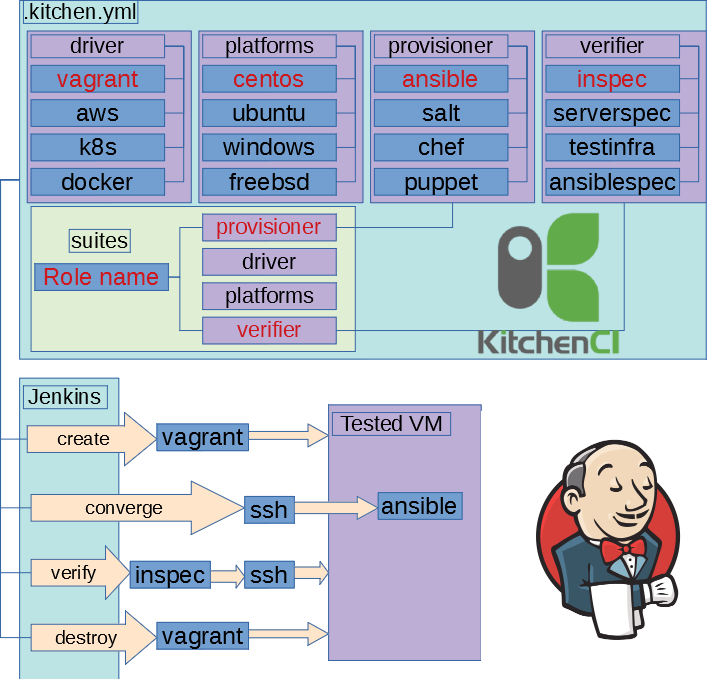
How to Recover Data from RAID 5, 1, 0 on Linux


Eternal euphoria



Tested on the following configuration:
Server: ubuntu 20.04
Clients: ubuntu 16.04, 18.04, 20.04
It doesn’t require a lot of software to create it.
Every Linux professional write scripts. Someеimes light, linear. Sometimes complex script with functions and libs(yes, you can write your bash-library for use in other scripts).
But some of the scripts need a configuration file to work. For instance, I wrote a script that builds the ubuntu image for pxe, and I need to change the build process without build-script changes. The best way to resolve this task is to add configuration files.
PXE is a great solution for booting a diskless computer (or a computer without an OS installed). This method is often used for terminal stations and OS mass installation.
Stock ubuntu (16.04) in pxe-mode can mount rootfs only from NFS. But this is not a great idea: any difficulties with the network/NFS server and the user gets problems.
In my opinion, it's best to use other protocols, such as http/ftp. Once booting, you will have an independent system
In the last part we discussed evolution of the interrupt delivery process from the devices in the x86 system (PIC → APIC → MSI), general theory, and all the necessary terminology.
In this practical part we will look at how to roll back to the use of obsolete methods of interrupt delivery in Linux, and in particular we will look at Linux kernel boot options:
Also we will look at the order in which the OS looks for interrupt routing tables (ACPI/MPtable/$PIR) and what the impact is from the following boot options:
You've probably used some combination of these options when one of the devices in your system hasn't worked correctly because of an interrupt problem. We'll go through these options and find out what they do and how they change the kernel '/proc/interrupts' interface output.

Originally, Buildroot offers a limited number of packages. It makes sense — there is everything you need, but any other packages can be added.
To add a package, create 2 description files, an optional checksum file, and add a link to the package in the general package list. There are hooks at different stages of the build. At the same time, Buildroot can recognize the needed type of packages:

Like I said earlier in previos articles, Buildroot is a great system for embedded Linux development. But sometimes strange things can happen.
Once upon a workday, I got the following task: add printing system in firmware (Kraftway terminal Linux next generation). Ok, so I had to add cups + cups filter and to build firmware. I set a postscript-printer and got an error "Filter failed". Trivial tasks turned into serious work.
In this article, I wrote my own way of solving this problem. It may be useful for other developers and IT-specialist and, also, for a deeper understanding of the Buildroot.
If you are a Buildroot beginner, I recommend reading my previous articles.
Revisioned versions of this patches applied to master.
In my previous article (Monitor linux) I wrote, what is this distro and how it works. Now i will write how to do it. It's may be interesting for everyone, who want to study buildroot.
The result we get from article is the following:


IaC (Infrastructure as Code) is a modern approach and I believe that infrastructure is code. It means that we should use the same philosophy for infrastructure as for software development. If we are talking that infrastructure is code, then we should reuse practices from development for infrastructure, i.e. unit testing, pair programming, code review. Please, keep in mind this idea while reading the article.
We’re excited to announce starting today you can try the Windows Subsystem for Linux 2 by installing Windows build 18917 in the Insider Fast ring! In this blog post we’ll cover how to get started, the new wsl.exe commands, and some important tips. Full documentation about WSL 2 is available on our docs page.




The module was created as a part of my master thesis in the 2010 year. The master thesis theme is Keylogging in Linux kernel. The main idea was to find out a way to intercept system calls for x64 arch Linux kernel, especially for kernel 2.6.34.7-61.fc13.x86_64.

It is text version of the presentation 2018-04-25 at Saint-Petersburg Linux User Group. Configuration example locates at https://github.com/ultral/ansible-role-testing
I suppose that that you make configuration management, not bash. It means that you have to test it some how. Have you ever tested ansible roles? How do you do it?

Let's imagine that you are developing software and hardware appliance. The appliance consists of custom OS distributive, upscale servers, a lot of business logic, as a result, it has to use real hardware. If you release broken appliance, your users will not be happy. How to do stable releases?
I'd like to share my story how we dealt with it.